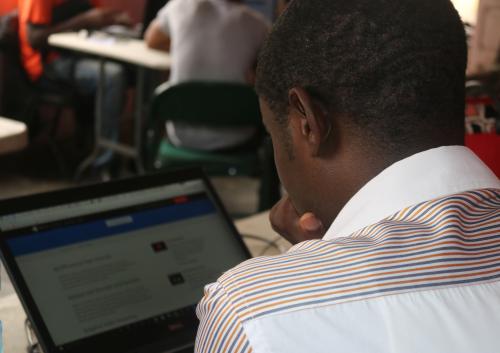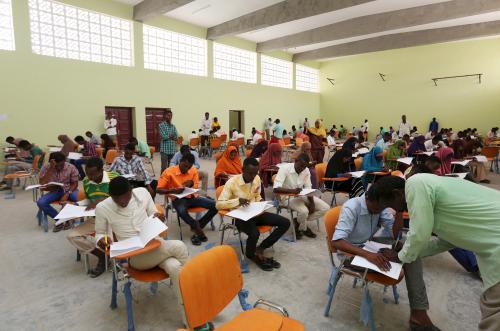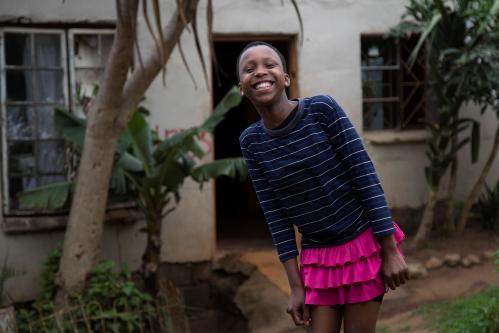Despite significant gains in educational attainment, Africa’s students are not acquiring the foundational skills they need to succeed in the modern workforce, according to the new World Bank report, “The Skills Balancing Act in Sub-Saharan Africa: Investing in Skills for Productivity, Inclusivity, and Adaptability.”
As featured in the report, Figure 1 shows that far more Africans are completing primary, secondary, and tertiary school now than in 1950, but there still remains a large number who have not attended school. Furthermore, says the report, Africa has not yet achieved the global “ideal” structure of educational attainment, which occurs when the majority of a population has completed secondary school and attained foundational skills for the workforce. Instead, the large numbers of Africans who have completed only primary or no school means that the continent continues to have a wide base of low-educated adults.
Figure 1: Evolution of educational pyramid in sub-Saharan Africa
Note: The graphs show the percentage of the adult population (ages 25–65) reaching each level of education (incomplete or complete).
Source: World Bank. 2019. The Skills Balancing Act in Sub-Saharan Africa: Investing in Skills for Productivity, Inclusivity, and Adaptability.
In addition to the challenge of low levels of education, Africa faces the issue of a mismatch between the skills of more highly educated adults joining the workforce and the needs of employers. As Figure 2 shows, many tertiary students pursue degrees with limited labor market prospects, particularly in the fields of humanities and social sciences. Conversely, enrollment in science, health, engineering, information and communication technology (ICT), and agriculture is 29 percent, on average, in the region, 10 percentage points lower than in middle-income countries outside of Africa. The report argues that developing a workforce with skills in these fields will be critical to Africa’s ability to develop knowledge-intensive industries and compete in the global market.
Figure 2: Enrollment in tertiary education by field of study, 2010-2015 average
Source: World Bank. 2019. The Skills Balancing Act in Sub-Saharan Africa: Investing in Skills for Productivity, Inclusivity, and Adaptability.
The report states that achieving significant progress in skills building is possible, but will require systemwide change that improves coordination between levels of governance and strengthens the abilities of stakeholders to implement new skills- and education-related policies. The report recommends that countries improve the efficiency of public spending and encourage more private investment to supplement public spending.
Notably, as Figure 3 shows, current public education spending in Africa is commensurate with non-African developing countries and falls within internationally recommended targets of 4 to 6 percent of GDP. At the same time, according to the report, skills attainment falls below the global standard. Countries must thus seek to make the most of current spending to ensure that skills attainment, and not just spending, is on par with global targets. Specifically, the report recommends that countries improve the targeting of resources to foundational skills and families in need, establish stronger accountability mechanisms to improve financial and education management systems, and tackle the issue of teacher absenteeism.
Figure 3: Public education spending as a percent of GDP
Source: World Bank. 2019. The Skills Balancing Act in Sub-Saharan Africa: Investing in Skills for Productivity, Inclusivity, and Adaptability.
The Brookings Institution is committed to quality, independence, and impact.
We are supported by a diverse array of funders. In line with our values and policies, each Brookings publication represents the sole views of its author(s).










Commentary
Figures of the week: Educational attainment and skills mismatches in Africa
July 18, 2019